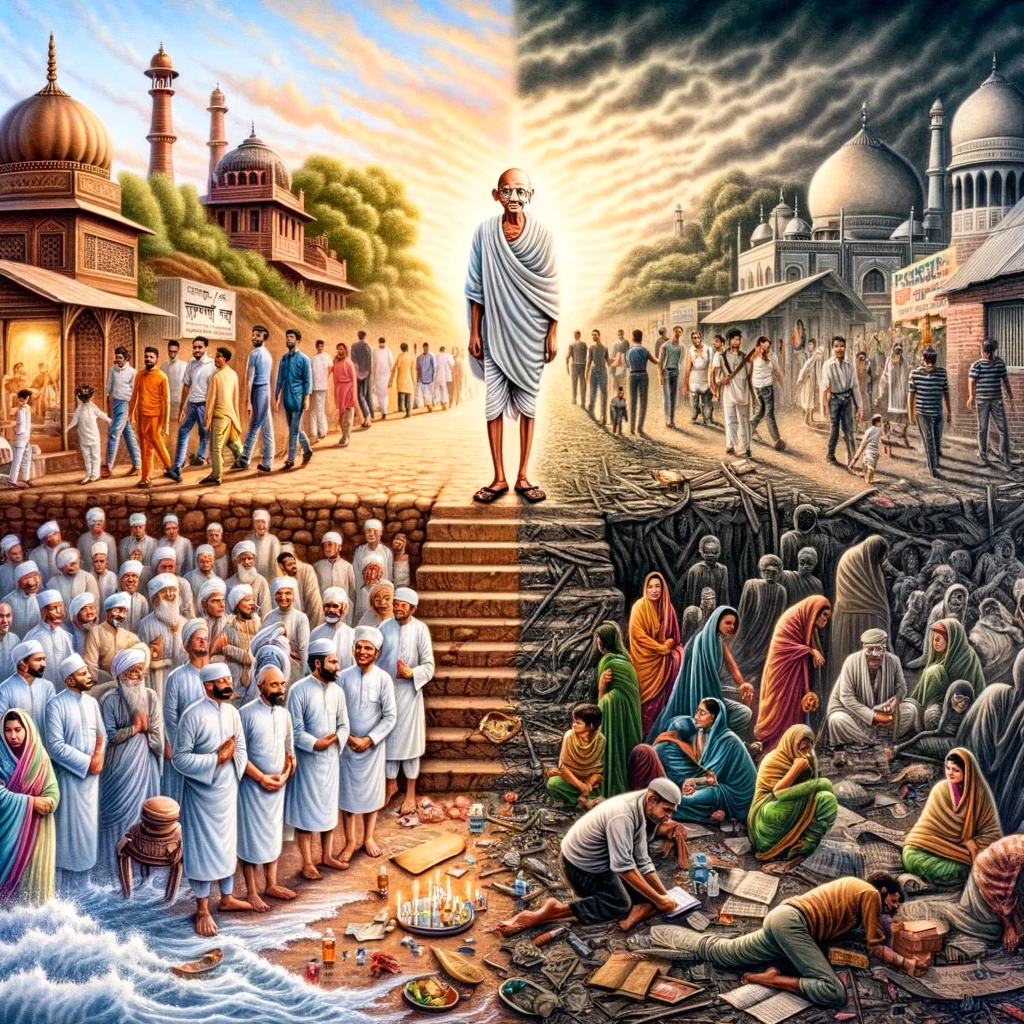On This Day 27 April 2024 Saturday
On This Day 27 April, Sam Vikram: 2081 Purnimanta Mass: Vaisakha Paksha: Tithi: Krishna Paksha Chaturthi – Apr 27 08:18 AM – Apr 28 08:22 AM, let us have a quick look of the events and anniversaries of India and the world
 Panchang /
Panchang /
Shaka Samvat: 1946
Purnimanta: Vaisakha
Tithi: Krishna Paksha Chaturthi – Apr 27 08:18 AM – Apr 28 08:22 AM
Yoga:
Parigha – Apr 27 04:19 AM – Apr 28 03:23 AM
Siva – Apr 28 03:23 AM – Apr 29 02:05 AM
Karana:
Vishti – Apr 26 08:06 PM – Apr 27 08:18 AM
Bava – Apr 27 08:18 AM – Apr 27 08:23 PM
Balava – Apr 27 08:23 PM – Apr 28 08:22 AM”
Sunrise: 5:47
Sunset: 18:49
Moonrise: 22:22
Moonset: 8:29
 Auspicious Time
Auspicious Time
Abhijit Muhurat – 11:52 AM – 12:44 PM
Amrit Kaal – 07:22 PM – 09:01 PM
Brahma Muhurat – 04:10 AM – 04:58 AM
![]() Inauspicious Time
Inauspicious Time
Rahu – 9:03 AM – 10:40 AM
Yamaganda – 1:56 PM – 3:34 PM
Gulika – 5:47 AM – 7:25 AM
Dur Muhurat – 07:31 AM – 08:23 AM
Varjyam – 09:27 AM – 11:06 AM
Information Source: https://www.prokerala.com/
Today / आज
Independence Fighters sacrificed- At Least: 12
Major Historical Events On This Day 27 April
General Jan Smuts and Mahatma Gandhi – Historical Negotiation: On April 27, 1911, Indian passive resistance in South Africa was temporarily suspended as General Jan Smuts began negotiations with Mahatma Gandhi, marking a pivotal moment in the struggle against discriminatory laws.
History in Brief On This Day 27 April
Saur Revolution – Start of War in Afghanistan: The War in Afghanistan began with the Saur Revolution on April 27 1978, with significant political upheaval as the People’s Democratic Party of Afghanistan took power.
Steamship Sultana Disaster – Maritime Tragedy: On April 27 1865, the worst steamship disaster in U.S. history occurred when the Sultana exploded on the Mississippi River, killing nearly 2,000 passengers, mostly Union soldiers returning from the Civil War.
Red Army Invasion of Azerbaijan and Armenia – Historical Conflict: Between April 27 and 28 1920, the Red Army invasion of Azerbaijan and Armenia ended the Armenian–Azerbaijani War and led to their incorporation into the Soviet Union, marking a significant change in the region’s political landscape.
Anniversaries On This Day 27 April
Shri Vallabhacharya – Spiritual Leader:
Vallabhacharya, born on April 27, 1479, was a seminal figure in Indian spirituality and philosophy. As a major proponent of the Bhakti movement, he advocated a path of grace towards spiritual realization, which differed from the traditional ascetic and ritualistic approaches prevalent at the time. He founded the Pushtimarg tradition, a devotional sect of Hinduism focused on the worship of Lord Krishna and based on principles of loving devotion. Vallabhacharya’s teachings emphasized that a soul achieves salvation through divine grace (Krishna’s mercy) rather than through rituals or asceticism, making his philosophy accessible and appealing to a broad audience. His works and life continue to influence millions of followers and resonate in the practices of Pushtimarg devotees today.
Shri Vallabhacharya: Spiritual Luminary and Founder of Pushtimarg
Rogers Hornsby – Baseball Icon: Rogers Hornsby, one of baseball’s greatest players, was born on April 27, 1896. His remarkable career left an indelible mark on the sport.
Nick Kyrgios – Tennis Prodigy: Nick Kyrgios, a dynamic and talented tennis player from Canberra, Australia, was born on April 27, 1995. He is known for his powerful play and charismatic presence on the court.
On This Day 27 April: Significant Events in Indian Independence Struggle
Martyrdom of Amar Singh and the Babbar Akali Movement
On this day in 1923, Amar Singh, a valiant Sikh-Jat from Pindori Nijran, Punjab, was arrested for his involvement in the Babbar Akali movement. This revolutionary group aimed to overthrow British rule through armed resistance. Amar Singh’s participation in the attempted assassination of a British loyalist highlighted his commitment to India’s independence. His execution on December 1, 1924, in Lahore Central Jail marked him as a martyr for the cause.
Executions During the Uprising of 1857
April 27, 1858, was a grim day in the history of Moradabad, Uttar Pradesh, during the Indian Rebellion of 1857. Several key figures were executed by the British:
- Abid Ali: A local rebel leader who fought valiantly against British forces.
- Amanatullah Khan: Known for organizing rebel forces and financially supporting the rebellion.
- Kabir Ali Khan: Led numerous attacks against British establishments.
- Sajid Ali Khan: Directed rebel activities in Moradabad and provided significant financial support.
Their executions were intended to quash the spirits of the insurgents but instead cemented their status as heroes of the resistance.
Reprisals in the Quit India Movement
The Quit India Movement saw significant violence and repression, and April 27, 1943, was particularly notable for the harsh penalties meted out to participants:
- Bihari Mahant, Binda Thathera, Jaho-Purio Dusadh, Maran Dusadh, Mudi Mian, Peary Dusadh, and Tin Juggi Pandey: All were involved in a violent incident at Fatwa Railway Station near Patna, where they attacked and killed two Royal Air Force officers. Their subsequent arrests and death sentences highlighted the severe crackdown on revolutionary activities during this period.
Kanai Lal Bhattacharya: A Revolutionary’s Sacrifice
On April 27, 1930, Kanai Lal Bhattacharya made a dramatic stand by assassinating R.R. Garlick, the District Judge of Alipore, as retaliation for the judge’s harsh sentences against fellow revolutionaries. Bhattacharya was killed in the ensuing shootout, demonstrating the extreme sacrifices made by revolutionaries during the independence struggle.
Manipuri Resistance and the Heroism of Tikendrajit Singh
Tikendrajit Singh, a prince of Manipur, was instrumental in the 1891 Manipuri Revolution against British encroachment. His efforts to maintain sovereignty culminated in a fierce confrontation on April 27, 1891, when British forces captured Manipur. Tikendrajit Singh’s subsequent execution on August 13, 1891, was a tragic end to a noble resistance effort.
Release of Satkari Banerji
On this day in 1928, Satkari Banerji, a prominent figure in Bengal’s revolutionary circles, was released unconditionally. His involvement in various anti-British activities and his subsequent imprisonment highlighted the ongoing struggle for independence and the resilience of its leaders.
These events, spread over different decades, underscore the diverse and sustained resistance against British rule in India. The sacrifices of these individuals on April 27th across various years were pivotal moments in the protracted battle for Indian independence.
Feature Image: The image depicts a divided landscape with Mahatma Gandhi standing at the center. To Gandhi’s left, the scene is peaceful, showing people calmly walking past traditional Indian architecture, under a clear sky. To his right, the atmosphere is tense; the sky is stormy above a scene of destruction and disarray, with people in various states of distress. This stark contrast symbolizes the division between peace and turmoil that Gandhi faced. (Click here to see image)

I love what you guys tend to be up too. Such clever work and exposure! Keep up the awesome works guys I’ve you guys to blogroll.
Real superb information can be found on web site.
Hello.This post was really motivating, especially because I was browsing for thoughts on this topic last Sunday.